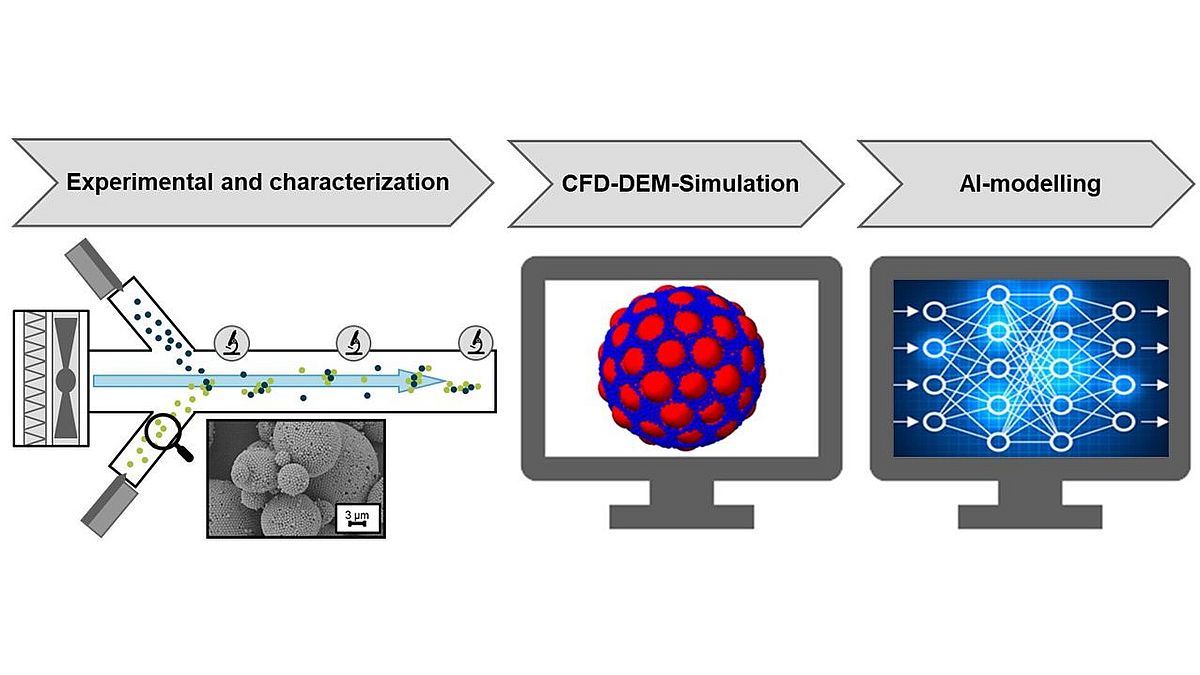Hybrid modelling of heteroagglomeration in gas-borne flows using CFD-DEM simulation and machine learning methods

Project Leader :
Prof. Dr.-Ing. Carsten Schilde
TU Braunschweig
The mechanistic understanding of particulate processes is the basis for creating tailor-made, particulate products with additionally integrated functions. One way to combine existing particle properties or to create new functions by combining them is heteroagglomeration via gas phase processes. Submicron particle systems in particular have a particularly high potential for heteroagglomeration processes, but can only be characterized with high measurement effort with regard to the complex interplay between process parameters, disperse particle properties and particle interactions.
The use of coupled flow (CFD) and particle simulations (DEM) offers the possibility to systematically investigate the currently hardly investigated heteroagglomeration processes of submicron particles as a function of process parameters, disperse particle properties and the different particle interactions. Due to the increasing computing power, much larger data sets can be generated on the basis of CFD-DEM simulations, which allow the derivation of mechanistic relationships and thus a targeted and transferable process and product development.
The use of realistic particle contact models and their sufficiently accurate parameterization is crucial for the correct simulative representation of the heteroagglomerate structures obtained in the experiment. For calibration and validation, defined spherical primary aggregates in the submicron size range are to be generated in a measurement setup by processing nanoparticulate suspensions in the microspray dryer. In the subsequent agglomeration zone, the dry particles will be agglomerated under defined conditions. Inline measurement technology and sampling will enable a time-resolved measurement of the agglomeration state. For 3D reconstruction of the resulting structures and measurement of particle interaction forces, suitable measuring methods (FIB-SEM, AFM) are established and applied.
The use of the obtained CFD-DEM data sets for semi-mechanistic modelling requires the application of data-driven methods that are able to evaluate, further develop and combine existing mechanistic models. Here genetic programming is advantageously (Grey Box Modelling). It is the aim of the project proposal to reduce costly experimental measurements and to calibrate and validate CFD-DEM simulations in order to use them afterwards as a basis for a data-driven hybrid modelling based on intelligent data-driven methods.

